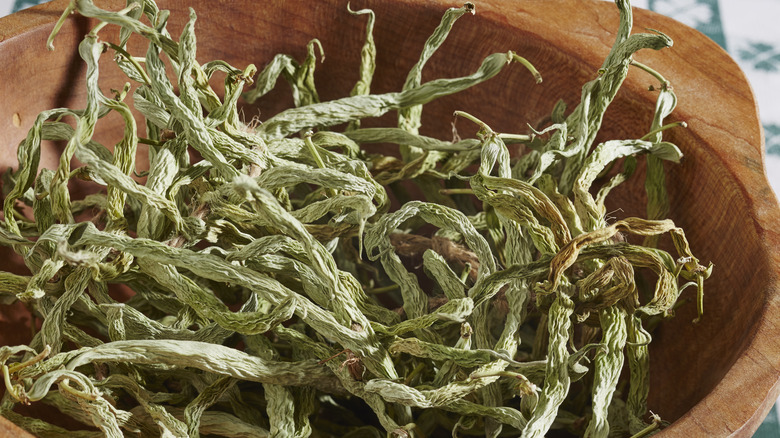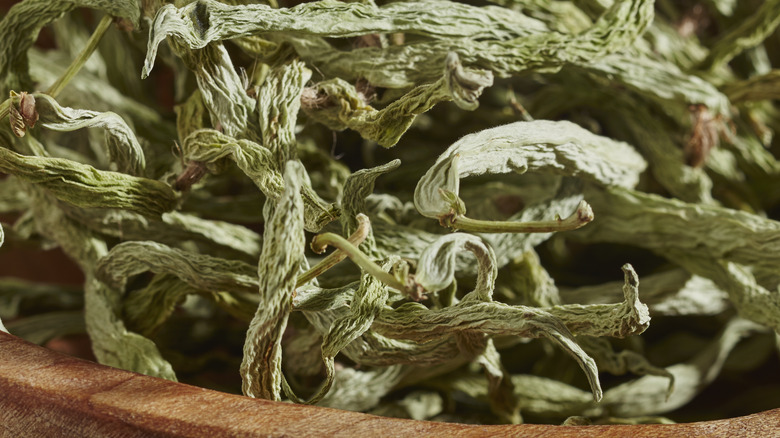Leather Britches: The Velvety Green Bean Preparation You Should Try
Nothing beats the taste of fresh-picked vegetables such as green beans. But, preserving them for later use comes down to methods like canning, freezing, pickling, or drying, according to Almanac. Consider the dilly bean you might have in this weekend's Bloody Mary. Serious Eats notes that to pickle the green beans, you first need to have the canning basics down pat which can buy you two years of shelf life. And, if you freeze fresh green beans, Taste of Home says they'll keep for several months.
The outlet offers plenty of side dish recipes utilizing the preserved harvest. But, when it comes to drying green beans, they can keep indefinitely which made this age-old method a necessity — a necessity that some believe started with the Cherokee people, per Southern Exposure Seed Exchange. Although, generations of the German larder have contained dried green beans called Getrocknete Bohnen, where early Appalachian settlers picked up the practice of drying them (via Smoky Mountain Living Magazine).
The publication outlines that the Appalachians called them leather britches because of their appearance after being dried. And, when cooked, Kentucky-born author and Appalachian authority, Ronni Lundy, told Southern Kitchen, "It's just intoxicating to eat them — the flavor is not like another bean dish that I know of because of what happens with the shell when it dries and then cooks — it really is a unique flavor." Simmered with pork fat, the meat of the matter actually remains with the drying technique.
How to make leather britches
Much like how red hatch chiles of New Mexico are strung, green beans are strung with a needle and thread before hanging them to dry, according to Smoky Mountain Living Magazine. The outlet also suggests drying them on a screen like apples, or even in a dehydrator. But, what's the fun in that?
Any green bean will do. But, Southern Exposure Seed Exchange suggests some leather britches diehards swear by turkey craw, half runners, or red striped greasy beans as their choice varieties. Regardless, the flatter, wider beans are easiest to string. When stringing them, the outlet recommends leaving space between each bean for better airflow. Just make sure they're dried thoroughly prior to freezing, or storing them in a sealed container.
Even though they're already meaty by nature, according to Southern Kitchen, the umami profile they take on with a long simmer also creates a velvety mouthfeel and is what Lundy means by "there's some kind of delicate thing in there." Still, if you thought leather britches were but a mere fashion statement, that's just nonsense — or as any Appalachian might refer to as fogeyism (via Garden & Gun). So, grab a needle and start to stringin'.

